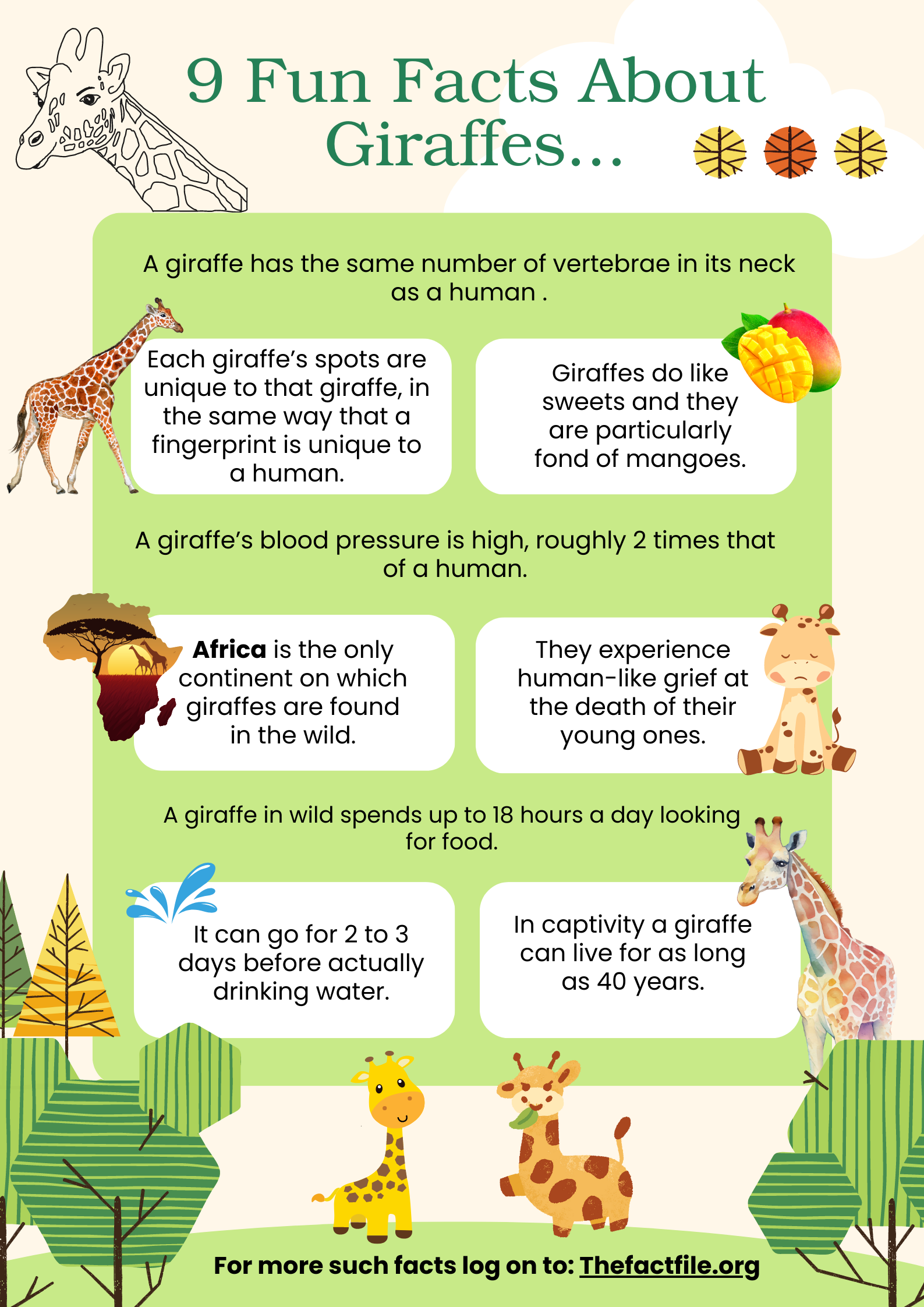Last updated on June 10th, 2023
The giraffe is a one of a kind animal that Africa alone can lay claim to. These gentle giants have co-existed with man for many centuries. They have been depicted in works of art as far back in time as ancient Egypt and are still seen in modern works of masters like Salvador Dali. They are the subject of multiple folk tales that offer an explanation for the giraffe’s striking long neck.
As a popular draw in the many zoos of today, they are fascinating to watch, but these limited settings do not allow a clear understanding of the true magic of the giraffe in its natural habitat. Here is a list of 50 facts about giraffes to help you understand and appreciate these wonderful creatures.
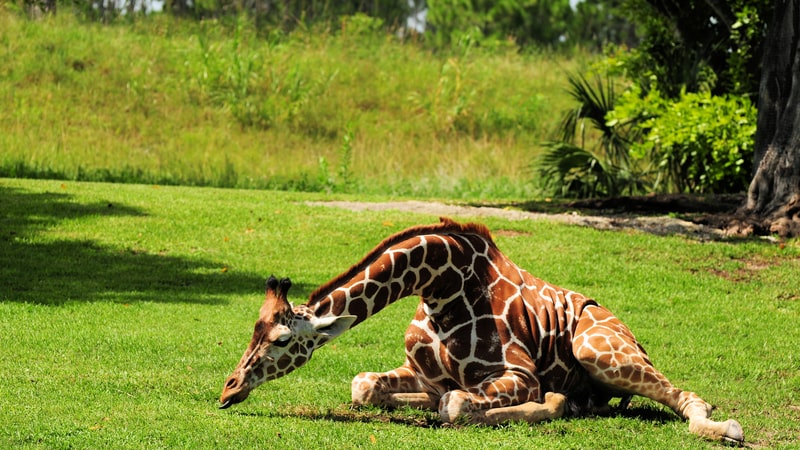
Species
1. There are four main species of giraffes, which are further divided into smaller subgroups, although there has been debate as to how many subgroups there are. The four main groups include the Reticulated, the Masai, the northern, and the southern giraffe. Each species has a distinctive look.
2. The Reticulated Giraffe has spots in a pattern that resemble the bricks in a wall.
3. The Masai Giraffe has spots that are more ragged, resembling an oak leaf.
4. The Northern Giraffe has a yellow and black body that is easily hidden in its environment.
5. The spots on a Southern Giraffe are almost star shaped.
Spot, Spots, Spotted
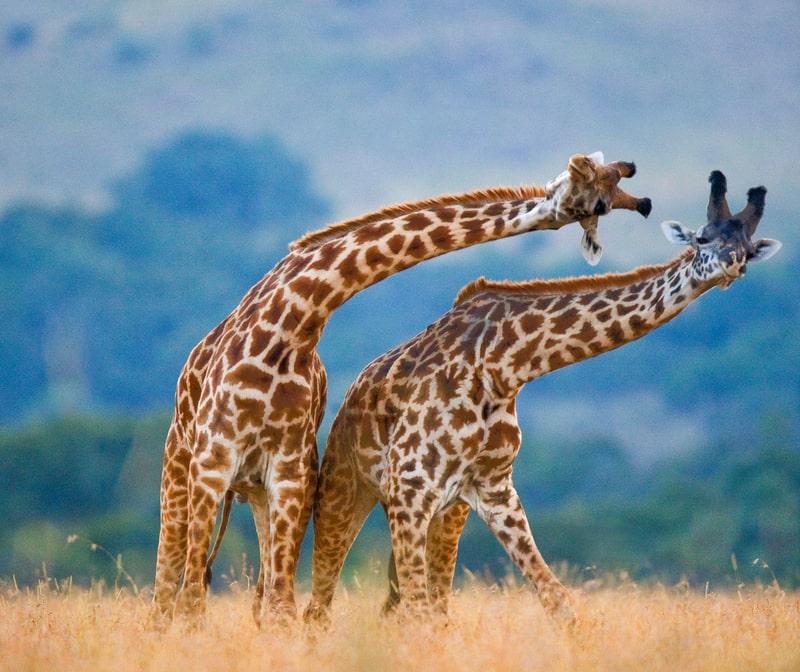
6. Although all giraffes have spots, the spots on the bull darken and continue to darken with age.
7. Each giraffe’s spots are unique to that giraffe, in the same way that a fingerprint is unique to a human.
8. The spots on a giraffe are not only aesthetically pleasing and good for camouflage in the wild, they also serve a physiological function. Each spot has a complicated system of blood vessels and they actually release heat, allowing the giraffe to regulate its body temperature.
Life Expectancy
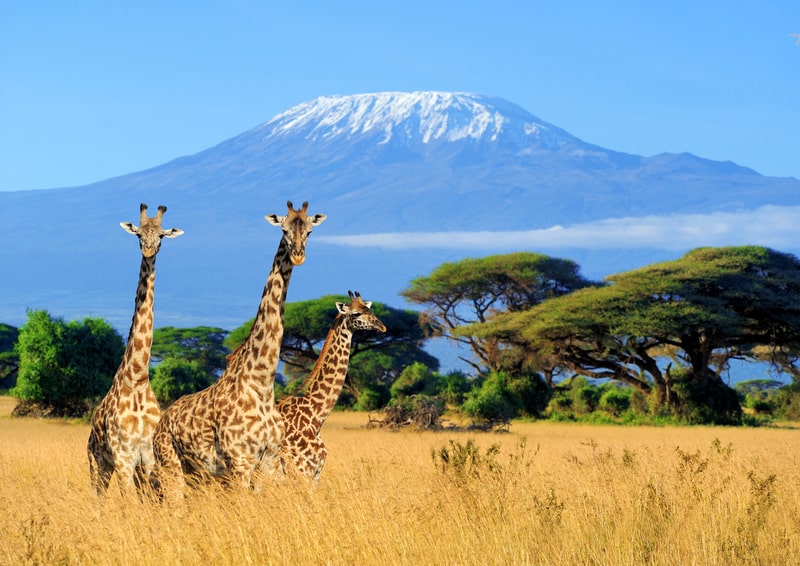
9. In nature, with no interference from man, a male giraffe (called a bull) will live approximately twenty five years, while a female (called a cow) usually lives a little longer.
10. In captivity, with a lack of predators and supplied nutritional needs and medical care, a giraffe can live for as long as forty years. Unfortunately, zoos cannot duplicate the expanse of a giraffe’s natural habitat, and for this reason, they do not always fare well in captivity. There is a high mortality rate for these giraffes.
Family and Social Matters
11. As social creatures, giraffes exist in herds of fifteen to twenty plus members. These herds are called towers. Towers are divided by gender, with groups comprised of females and young males, as well as other groups comprised of males. At about fifteen months of age, the boys will leave the female tower and join an all-male herd, while the young females remain with their mothers.
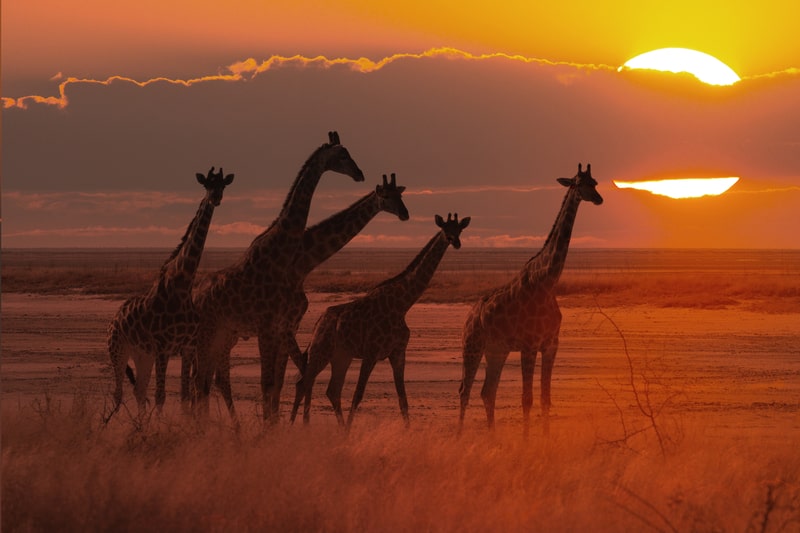
12. The female giraffe, as well as her group, shoulders the responsibility of caring for the young. For instance, in the female giraffe community, while the others leave in search of food or water, one female takes responsibility for watching the young, like a babysitter.
13. Giraffes do not choose a mate for life. A male will walk through a group of females looking for a fertile mate. He will actually taste the urine of a female to see if the timing is right for fertilization.
14. The gestational period of a giraffe lasts for fifteen months, and while most births are single, there may occasionally be twins.
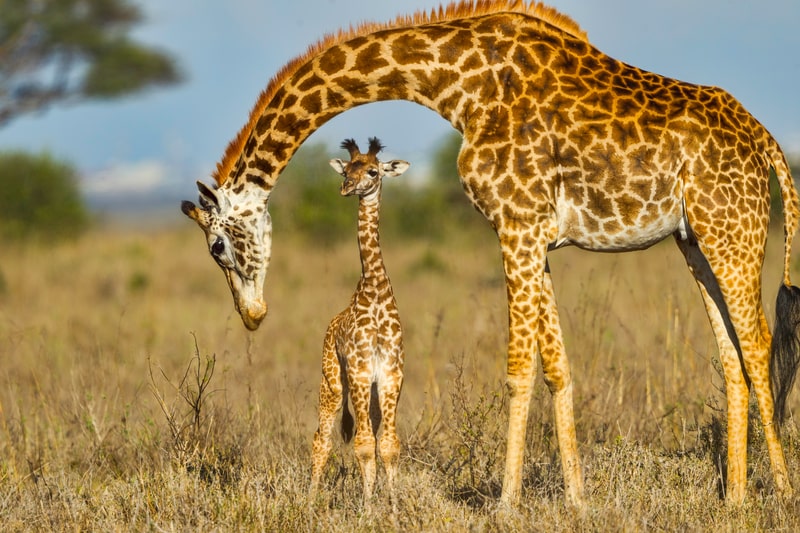
15. When the calf is born, the mother is standing, and the baby drops a whopping five feet to the ground. This drop to the ground may seem extreme, but bear in mind that the baby weighs approximately one hundred fifty pounds and is around six feet tall. Even more amazing, the giraffe will mature quickly, and its height will come close to doubling in the first year. Only thirty minutes after birth, the calf is able to stand. If not, it would not be able to reach its food source and nurse. Although the baby will nurse from its mother for anywhere to nine to twelve months, it will also start eating leaves as early as four months.
Communication: Silent and Not So Silent
16. At times, giraffes communicate with each other using sounds that are too low a frequency to be detected by the human ear. In fact, in the night they hum to each other at this low frequency- a silent giraffe lullaby, perhaps.
17. Giraffes can also make audible noises. A cow may whistle to her young, with a noise some say is like the sound of a flute. Other noises giraffes have also been known to make sound similar to bellowing, hissing, and snorting.
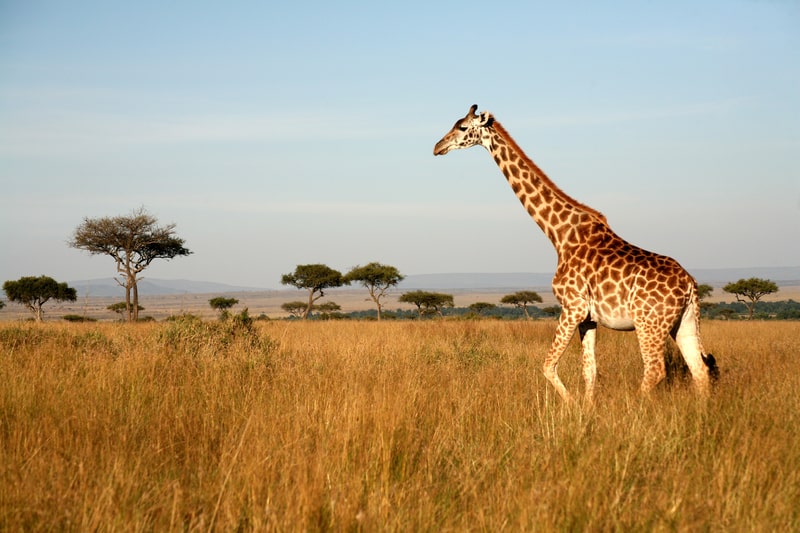
18. The posture of a giraffe can also be telling and communicate a message. For example, a dominant male will hold its head high and walk erect, displaying his side, while the non-dominant male will walk with its head, ears, and chin held low, and even run away.
Super Size
19. A giraffe’s neck can be more than seven feet long. Surprisingly, a giraffe has the same number of vertebrae in its neck as a human. The difference lies in the fact that each of a giraffe’s neck vertebra are close to eleven inches long.
20. The long neck is an advantage for a giraffe in the fact that it allows it a better view of its surroundings to watch for enemies.
21. Despite the length of a giraffe’s neck, it is too short for its head to reach the ground when it is standing, a challenge when it needs to drink from a ground level water source.
22. An involved circulatory system in a giraffe’s massive neck makes sure that the blood can move up the neck to the brain, while at the same time, it ensures that there is not too much blood sent to the brain when a giraffe’s head is lowered.
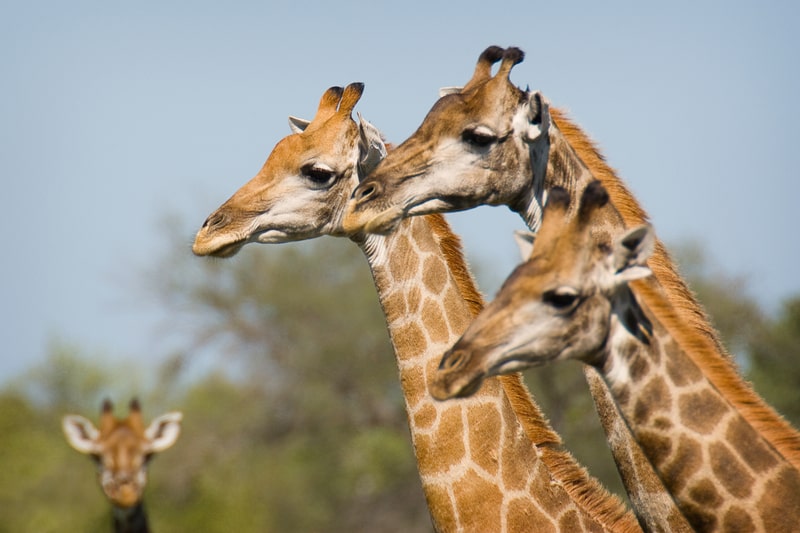
23. One more plus for a giraffe with a long neck is that it can provide balance when the giraffe is running, by leaning to one side or the other to evenly distribute the body’s weight.
24. The heart of a giraffe weighs almost twenty five pounds and can pump sixty liters of blood every minute, with up to one hundred seventy beats per minute. A giraffe’s blood pressure is high, roughly two times that of a human.
25. The bull can reach a height of more than eighteen and a half feet, while the cow is usually a foot or two shorter. The height of the average giraffe’s legs alone are approximately six feet long. With those long legs, a running giraffe can cruise at a speed of thirty five miles per hour while a walking giraffe moves along at about ten miles per hour.
26. Cows can weigh as much as two thousand six hundred pounds, and bulls can weigh an astounding four thousand two hundred fifty pounds.
What’s for Dinner?
27. Giraffes are herbivores, eating leaves, fruits, and flowers.

28. The Acacia Tree, which has long sharp thorns, is a favorite of the giraffe. The fact that giraffes have very long tongues and thick lips that allow it to avoid the thorns of the Acacia, is a case of nature responding to a need.
29. They do not have top front teeth. To rip off leaves, the roof of the mouth in the front is hard. And farther back, the roof has ridges to move the food back, where molars chew it.
30. Giraffes do like sweets and they are particularly fond of mangoes.
31. It takes a lot to keep a giraffe going. One giraffe can eat seventy five pounds of food in a single day, and a giraffe will spend up to eighteen hours a day looking for food.

32. Water is another matter. Because a giraffe can get its moisture from the plants and dew condensed on those plants, it can go for two to three days before it needs to actually drink water.
33. A giraffe is what is known as a ruminant animal. With multiple stomachs, a giraffe will chew and swallow its food, only to bring it up, chew it, and swallow it again, much like a cow.
Predators
34. There are very few predators that will go after an adult giraffe. However, an adult giraffe is most vulnerable to attack when it has its legs splayed to get a drink of water. For this reason, giraffes will often drink in twos, with one serving as a watchman while one drinks and then switching roles.
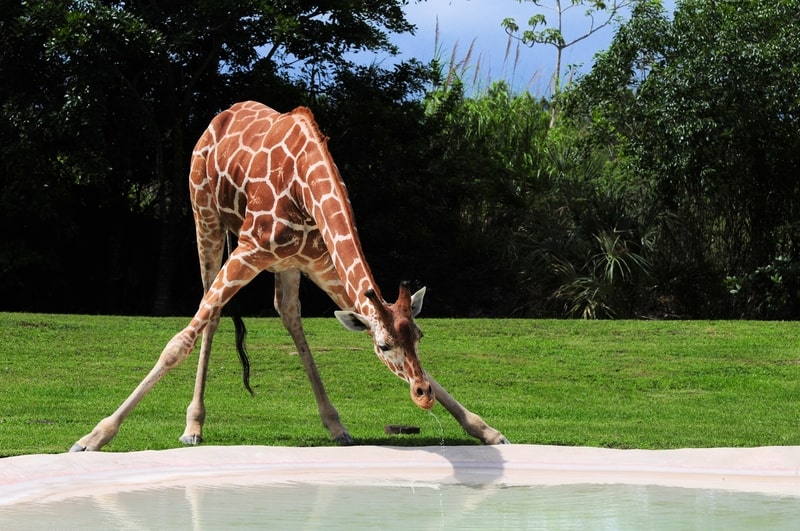
35. Young giraffes, despite protective efforts of its mother, are vulnerable to attacks from anything from lions to hyenas and leopards to wild dogs.
Home on the Range
36. Africa is the only continent on which giraffes are found in the wild.
37. For the most part, giraffes live on savannas, which are grassy plains with sparse tree life. They can also be found in open woodlands. There are exceptions; there is one subspecies found in a desert climate.
38. They are not territorial, but do have a range of land they consider home, but they have been known to leave their home in search of food.
Positive Attributes
39. The way giraffes look for and find food and react to their hanging environment indicates a degree of intelligence.
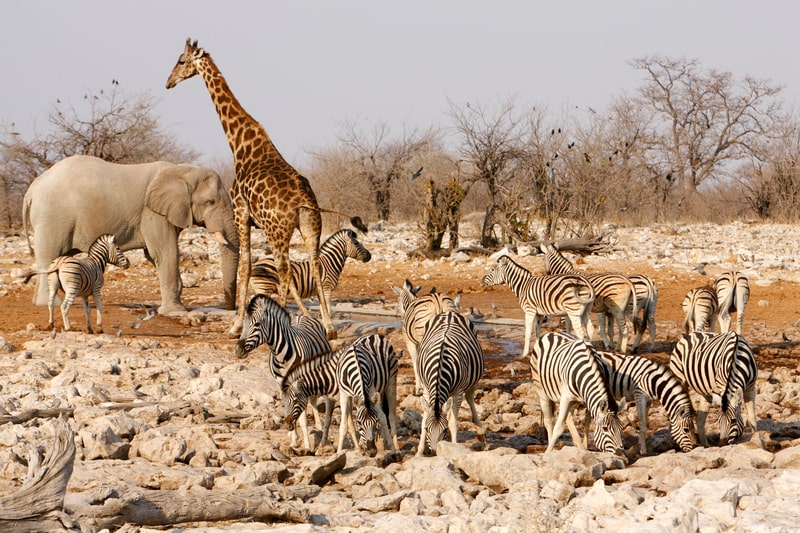
40. They are peaceful animals, and they get along and keep the company of other peaceful herd animals for the safety and protection of higher numbers.
41. They experience human-like grief at the death of a calf. They will stand by the dead calf, nudging it or running around it, or they may return to it for a period of time.
42. They have excellent eyesight through which they can communicate. When a giraffe sees a lion miles away, the giraffe will stare at it. The other giraffes in the surrounding vicinity will pick up on this and stare in that direction, also.
. . . continue reading on the next page

